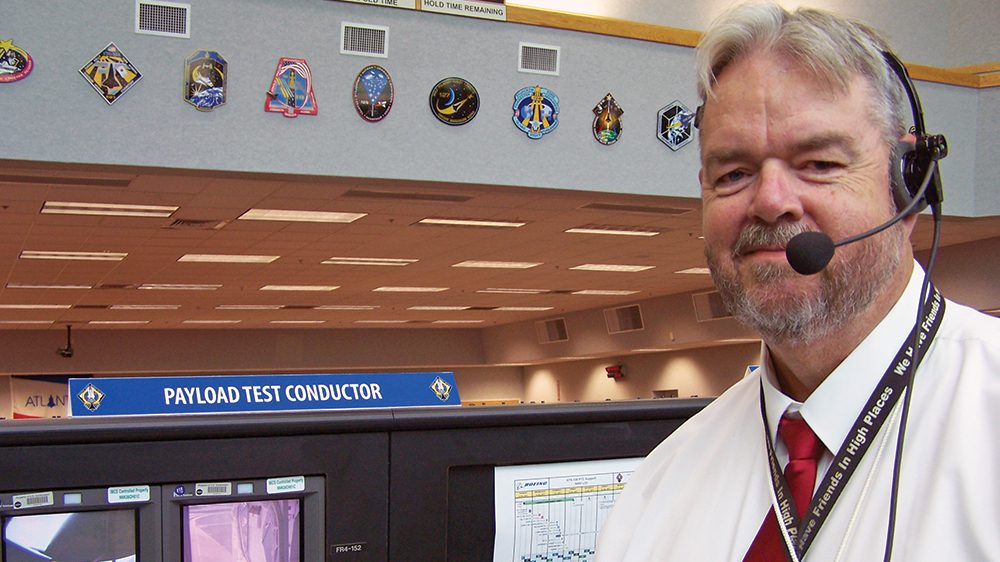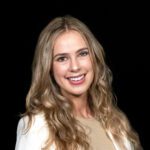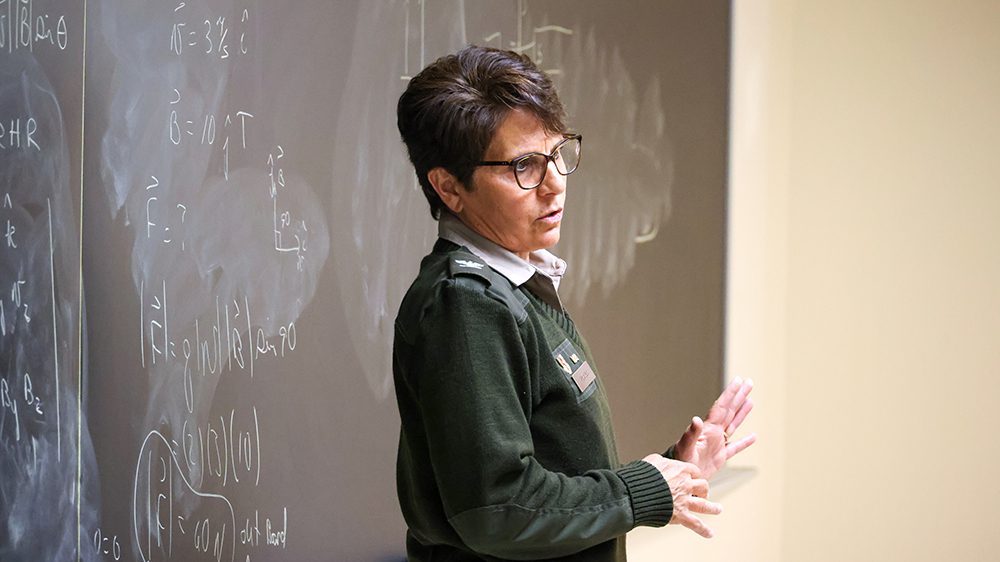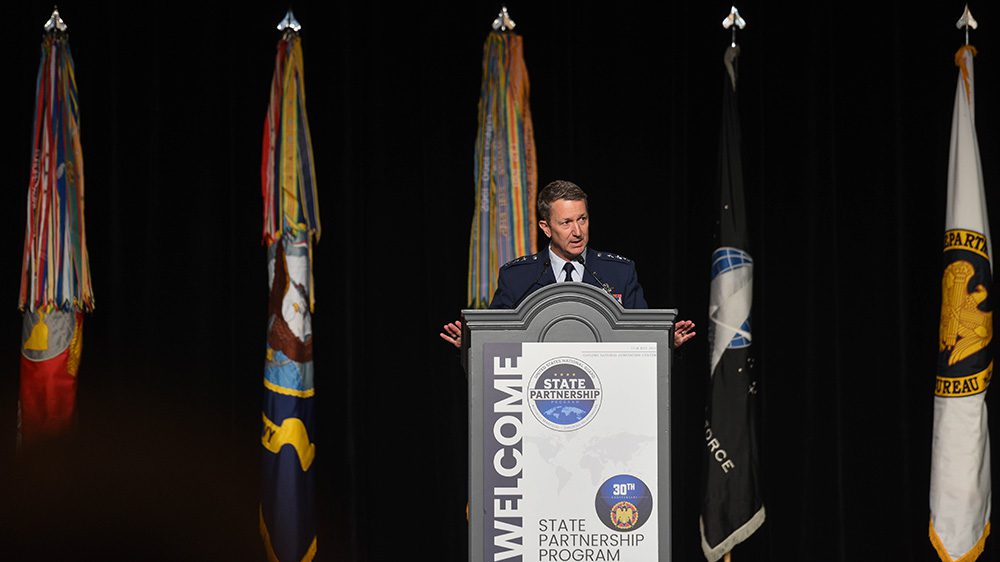Of his career with NASA, Joseph R. Mounts ’78 will tell you: He is living out a dream.
Many years, thousands of engineers, and innumerable contributions launch a space shuttle. Though his childhood dream looked more like being the astronaut in the spacecrafts he watched launch, Mounts’ dream evolved to being the engineer behind the launches. In 2011, when he sat in the firing room launching the final mission of the 30-year American Space Shuttle Program—the STS-135 orbiter Atlantis—Mounts said this was his “walk on the moon” and the greatest moment of his career.
In addition to his part in this launch, Mounts’ accomplishments include recent recognition for his achievements in developing payload simulation tools that aided in preparations for testing the Space Test Program Houston 7 and STP-H8 payloads and his role in reestablishing the test conductor position on NASA test teams. Considering his career, one might expect Mounts was always a brilliant student with stellar grades to reach where he is today, but he will tell you that was not the case. Instead, he brought to the table a dream and a work ethic.
Matriculating from Washington, Pennsylvania, Mounts was first interested in VMI because of his father, who served in the Third Army in World War II under Gen. George S. Patton III, Class of 1907. “I was a Patton fan growing up, and I read in a book that he had gone to VMI briefly,” said Mounts. Following in the footsteps of his older brother, Jonathan G. Mounts ’74, Mounts said, “I came home one day and said, ‘Dad, I think I want to go to VMI.’”
Though it would take him nearly eight years to graduate with his civil engineering degree, Mounts persisted and, in that time, never lost sight of his goals. After initially starting a career as a professional land surveyor while running an engineering firm with his brother, Mounts reflected on his dreams and decided to make the leap to pursue a career with NASA.
“I wasn’t a very good student at VMI. It took me about eight years to get through,” Mounts chuckled. “During that period, my brother and I started an engineering and land surveying firm. We did that for quite a few years. And one day, I was sitting there thinking, ‘Well, this was his dream for us to do, which we’ve done. My dream was to work for NASA.’ And so, we sat down, had a talk, and I then packed up the family and moved to Florida.” It was a bold move for the family, but he said his wife was his staunchest supporter.
It took several years, but eventually, Mounts was employed with Boeing, the world’s largest aerospace company, preparing payloads for flight aboard the space shuttle. He began a 13-year career of payload testing at Boeing. Toward the end of his time there, he served as a payload test conductor: The person responsible for the payload processing, both standalone and post-integration into the shuttle payload bay.
Then, Mounts landed his dream job of working for NASA at the John F. Kennedy Space Center in Merritt Island, Florida. At the time, NASA wanted to add structure to their payload test environment and knew Mounts had experience as a test conductor. “That’s sort of what a test conductor does: He is in charge of anywhere from five to 40 people during the test and verifies that all of the test objectives are met to ensure the successful operation of the payload on orbit. It’s tense at times, such as when you are up against a flight deadline, but it’s an awesome job. They knew I’d been a test conductor before, so they wanted to leverage some of that experience.”
KSC serves as the last testing ground of a payload before launch, and Mounts is one of the engineers responsible for ensuring these payloads are working properly. At the International Space Station, scientists worldwide spend years creating their experiments; finally, they get to KSC for the final test before they launch.
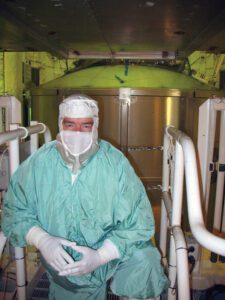
It took time and persistence for Mounts to land his dream job with NASA, including the eight years he spent completing his engineering degree.
“They come here to KSC, and we test them to make sure that they’re going to work once they get on orbit,” Mounts explained. “If you get it up on orbit, and you can’t get the data back down to the ground, that’s a huge monetary and scientific loss. It would be heartbreaking. We’re the last line of defense for them; we do the checkout, using our test stand that basically emulates the Space Station.”
For those less familiar with aerospace terminology, the term “payload” may need a little elaboration. A payload is part of the technology that performs a desired experiment and function while a spacecraft is in orbit.
“For example, the most recent payload I worked on was called EMIT, which flew on a Space-X rocket. EMIT stands for Earth, mineral, surface dust investigation,” explained Mounts. “It studies the dust in the Earth’s atmosphere that comes from the Sahara Desert, for example, and how it affects our environment. There have been many studies of dust in the air from the Earth’s perspective, but there’s never been a study from an experiment up on orbit. EMIT was the first to study surface minerals and how they affect our climate. So, the payload depends on what the scientists want to research.”
Mounts added order and structure to the testing environment in experiments like this from his position as test conductor, for which he was most recently recognized.
It was when Mounts was selected as the payload test conductor for STS-135’s final shuttle mission that Mounts said he finally got his “walk on the moon,” a term he uses to describe the greatest moment of one’s professional career.
On July 8, 2011, the energy in the Firing Room that day was palpable. This launch was the final mission of the American Space Shuttle Program. For the first time in his career, Mounts was only three rows from the front, counting down for the launch. On that particular day, tensions rose as storms passing over Florida threatened to call off the launch.
“We weren’t sure whether we were going to launch or not, and then range weather reported there happened to be a hole that they found in the storms,” said Mounts. “As the break in the storms passed over Kennedy Space Center, it just happened to be at launch time, so we launched right through the hole.”
Within that perfect second in time, the rocket launched, the building shook, and the world saw the program’s final shuttle launch. In describing that feeling and the stakes, Mounts said, “It was fantastic.”
It is difficult to appreciate the distinction in having a seat in the Firing Room as a part of the mission unless one is aware that nearly 1,000 different engineers contributed an integral part to a shuttle like this. To be in a position distinguished enough to be among the 200 in that room is an honor for a NASA engineer.
“In the beginning, you get the jobs nobody else wants to do,” said Mounts. “You just continue to put in your time and work your way up. And then, one day, they look at you and say, ‘you’re going to be the payload test conductor for 135.’ And it’s an overwhelming feeling.”
He said he used to see the men in ties in the Firing Room and think, “those guys have to be geniuses,” but now realizes it’s not that they are brilliant—though many of them are—but that they are hardworking.
Mounts credits his parents—his dad for his belief in education and his mother for her love of science—for his career and lifelong passion for space and science. One of his most poignant memories occurred during the Mercury program in the 1960s. Mounts’ mother was always interested in science and was “a fanatic” about watching space launches. As a boy, he would sit in her lap and watch them with her. During a particular launch, he saw his mom crying when he came in the living room because NASA thought they had lost astronaut Scott Carpenter before he was found 250 miles away from his targeted landing point. Her investment in these missions left a lasting impression on Mounts.
“I’ll never forget coming in, and she had her head in her hands,” recalled Mounts. “It was a very, very striking moment to a young kid.”
Today, his family’s generational interest in science and space has continued. “I pass that on to my children, who have passed it on to their children,” said Mounts. “My wife and I have four children and eight grandchildren. And they all pretty much share my passion. My son works out at the center, too; my oldest daughter is a nurse, and my two youngest ones are teachers. But they all share the passion for space. We all go out and watch rocket launches, no matter what rocket it is. We’re almost always standing out in the yard watching a rocket launch.”
As he reflects on it all: His time with NASA, his career to get there, and the bonds and mutual passion his career has woven into his family, it’s easy to see why he calls it a dream.
“I’m having the time of my life,” said Mounts. “As a little kid, I used to read science fiction and dream about going to space and being an astronaut. Now you’re able to live that. You’re able to be a part of it. And it takes everybody to put the rockets up that the astronauts fly in. To be a part of that, it’s just amazing. It’s actually a dream come true.”
